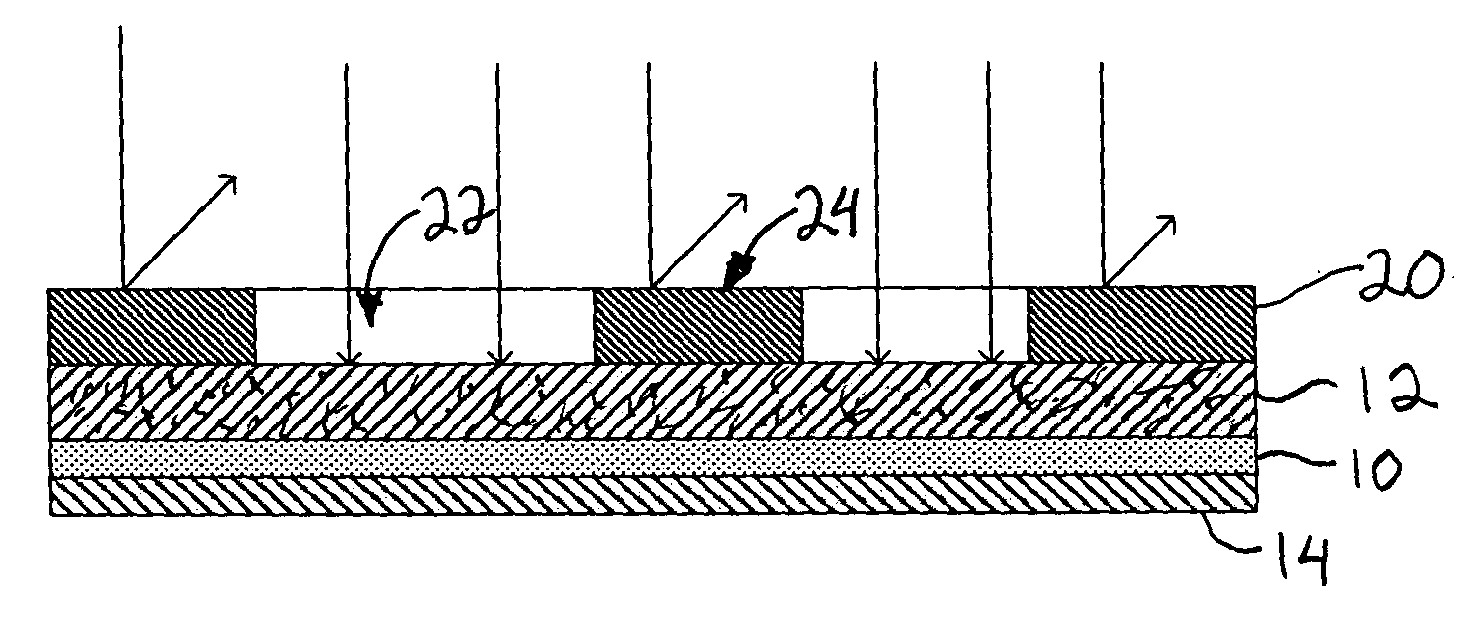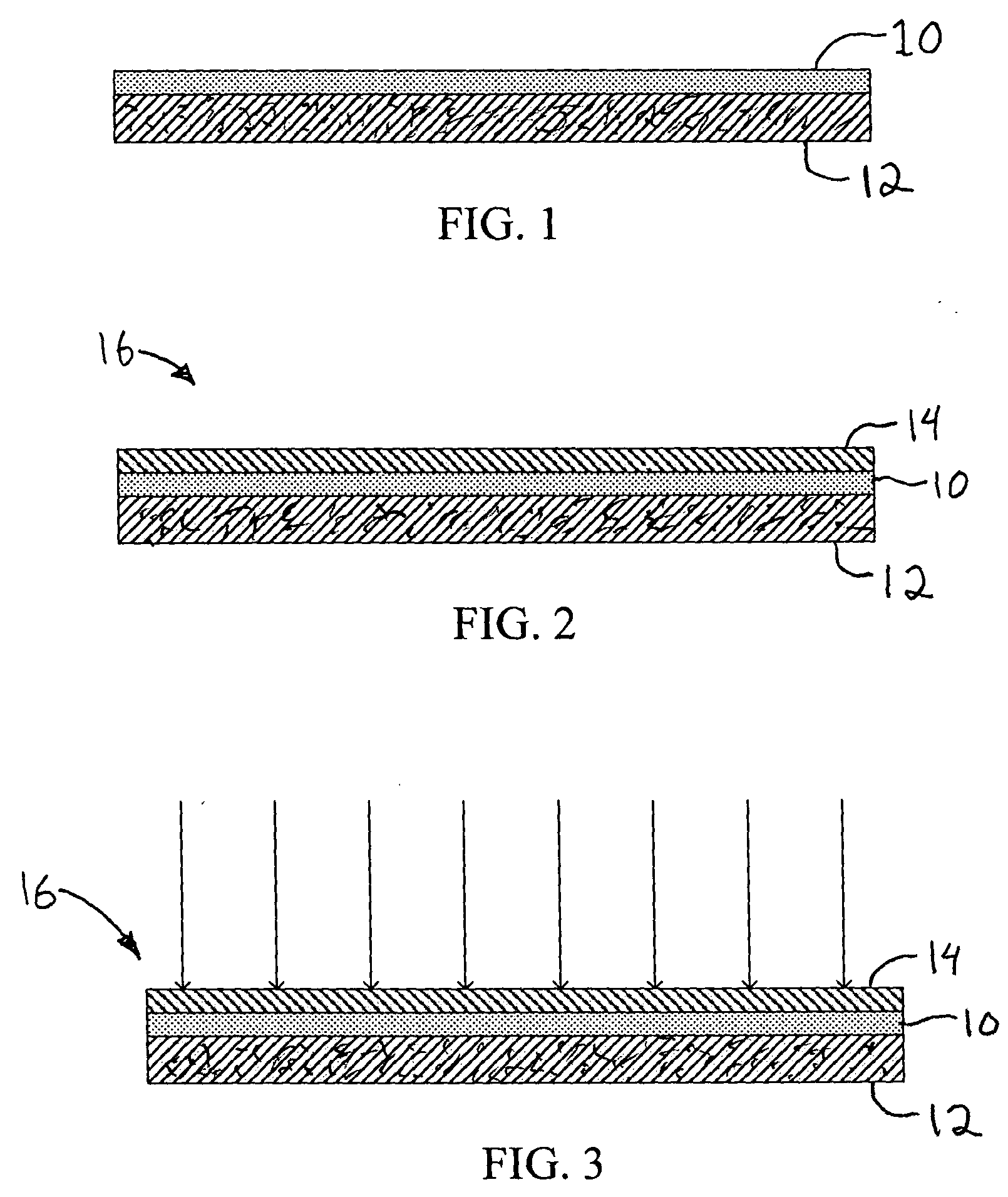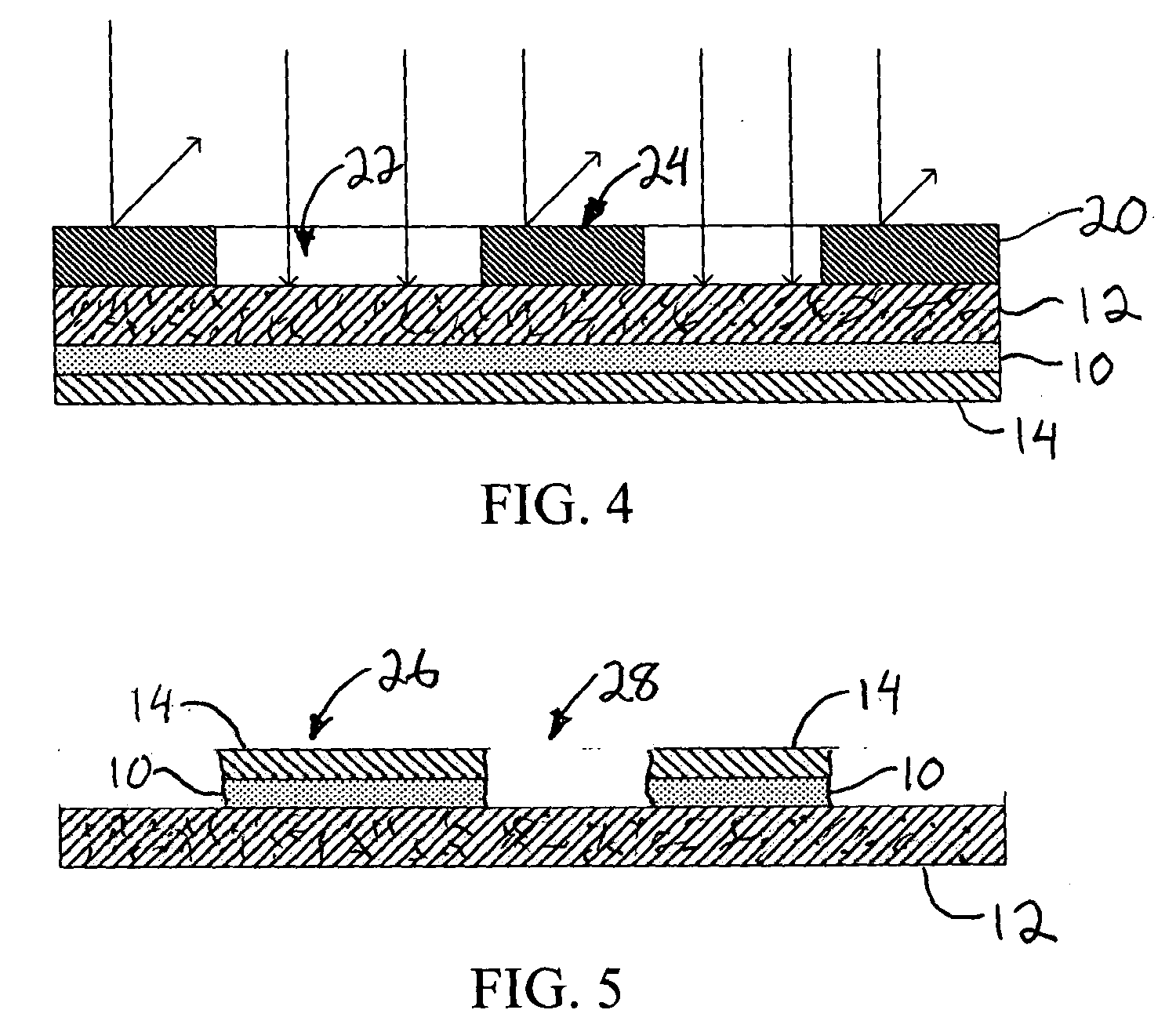Methods for coating surfaces with metal and products made thereby
a technology of coating surface and metal, applied in the direction of surface pretreatment, dielectric characteristics, phototackifying patterning, etc., can solve the problems of paper becoming brittle, easy to tear, and often breaking threads, and achieve the effect of preventing premature curing of bonding materials
- Summary
- Abstract
- Description
- Claims
- Application Information
AI Technical Summary
Benefits of technology
Problems solved by technology
Method used
Image
Examples
example 1
[0043] A silk fabric was stretched on a frame. In a room with yellow safelight, the entire area of silk was coated with a thin, uniform layer of Autosol 6000 CL sensitized silk-screen emulsion. Both sides of the silk were coated using a scoop coater. The frame was then placed face down on a horizontal surface with the edges carefully elevated so that the wet emulsion was not touching the surface on which the screen was resting.
[0044] A layer of patent gold leaf was applied immediately to the wet emulsion, and the entire silk area was covered with gold leaf. The gold leaf was then covered with wax coated paper and a gentle but firm pressure was applied over the entire gold leaf covered surface. The wax paper was removed, and the coated silk was allowed to air dry in the dark. The release paper was then removed from the gold leaf, which was adhered firmly to the emulsion coated silk surface.
[0045] The frame was then placed metal leaf side down on a flat, black surface, and a film po...
example 2
[0047] A length of fabric yardage was stretched onto a padded printing table and secured in place. A yellow safelight was used as the source of illumination for the workspace. A pattern was silk-screened onto the fabric using Autosol 6000 CL sensitized silk-screen photo emulsion as the printing medium. While the emulsion was wet, a layer of gold leaf was applied to the surface of the fabric to cover the entire printed area with gold leaf. The printed, gold-covered surface was then covered with wax paper and even pressure was applied to the entire area, thereby aiding the bond between the emulsion and the metal. The waxed paper was removed and the printed fabric was dried in the dark.
[0048] The printed fabric was then exposed to light using a 300-watt light bulb (General Electric Standard Incandescent Lamp 130 volts / longlife) at a distance of 24 inches and for a period of time of 2 hours. The excess metal leaf was then removed with a soft bristle brush. The printed metal leafed fabr...
example 3
[0049] Using a yellow safelight as a source of illumination for the workspace, a smoothly sanded and clean, dry wooden board was painted with a thin layer of Ulano TLX / CL sensitized silk-screen emulsion. A layer of silver leaf was applied to the wet emulsion-coated surface. The emulsion was dried in the dark and then was exposed, metal side up, to direct sunlight for several hours. The silver-coated wood was then soaked in a bucket of warm, soapy water for 15 minutes, rinsed in warm water and dried. The silver surface was preserved without any damage. A patterning method similar to that used in Example 2 was also used with this application of silver leaf onto wood.
PUM
| Property | Measurement | Unit |
|---|---|---|
| distance | aaaaa | aaaaa |
| diameter | aaaaa | aaaaa |
| temperature | aaaaa | aaaaa |
Abstract
Description
Claims
Application Information
 Login to View More
Login to View More - R&D
- Intellectual Property
- Life Sciences
- Materials
- Tech Scout
- Unparalleled Data Quality
- Higher Quality Content
- 60% Fewer Hallucinations
Browse by: Latest US Patents, China's latest patents, Technical Efficacy Thesaurus, Application Domain, Technology Topic, Popular Technical Reports.
© 2025 PatSnap. All rights reserved.Legal|Privacy policy|Modern Slavery Act Transparency Statement|Sitemap|About US| Contact US: help@patsnap.com



